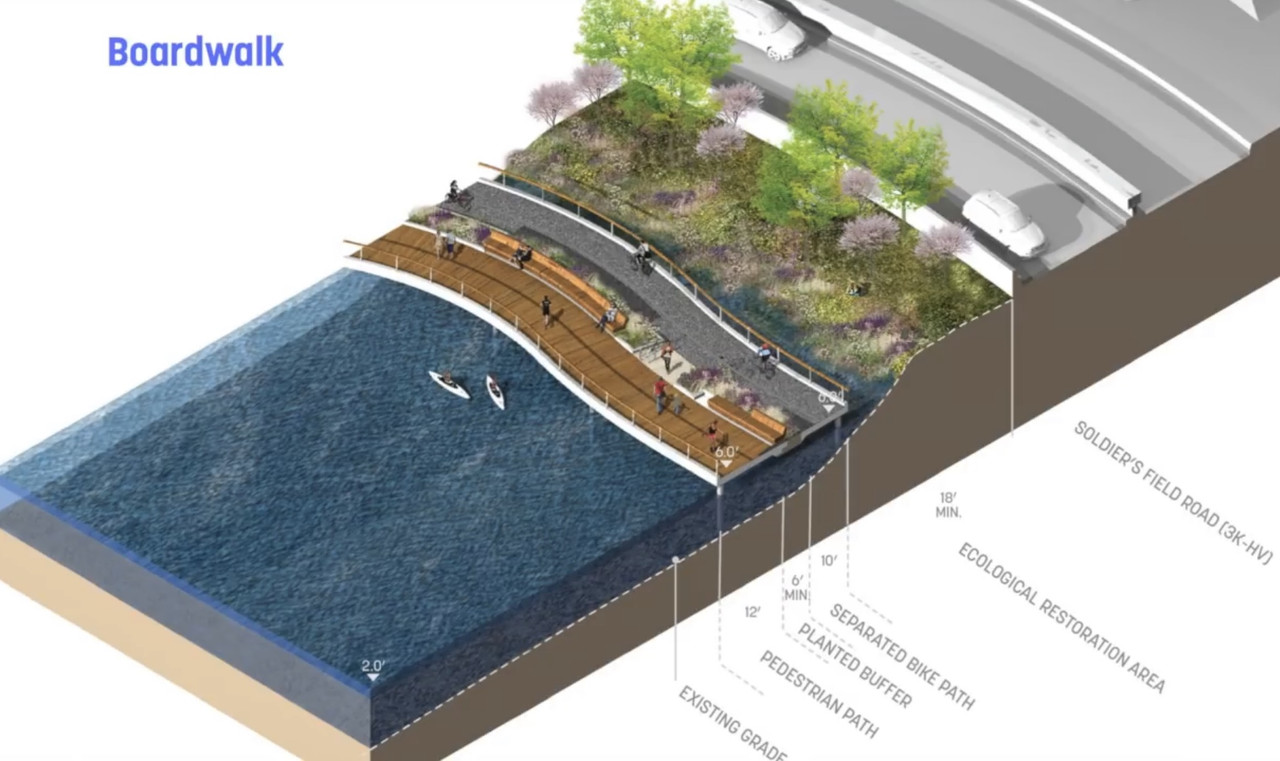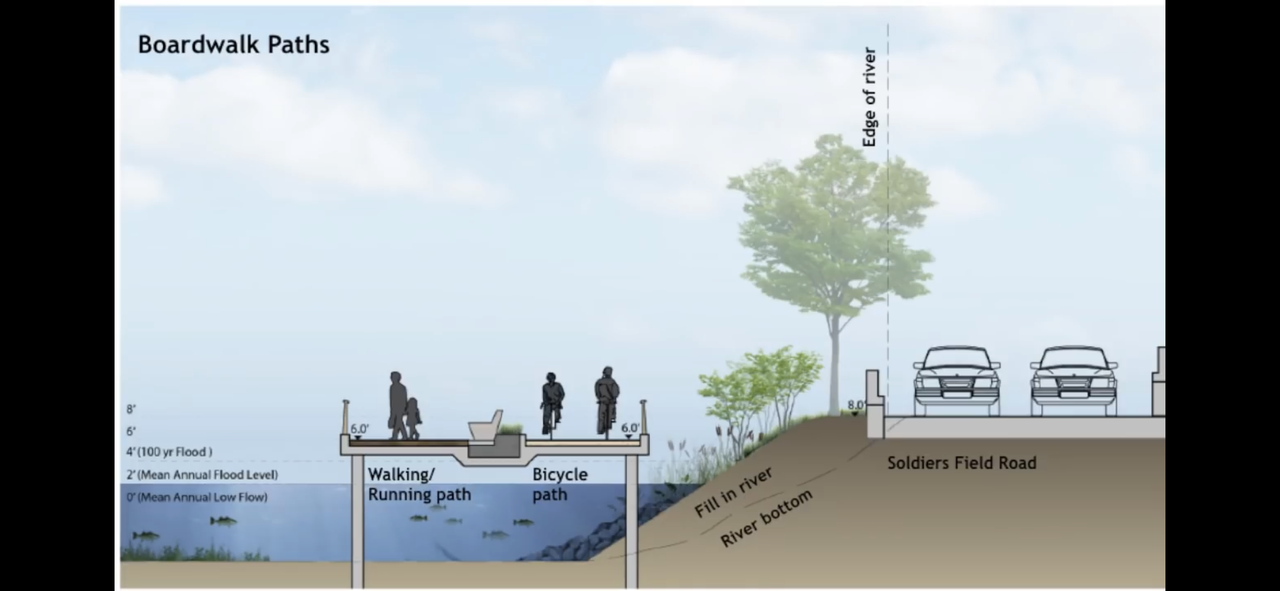Keep in mind, the tie-in to the Green Line & Central Subway is going to have to be at BU Bridge in order to net any non- dog-slow junctioning geometry, so the critical parts of Urban Ring LRT all happen well east of the West Station/Pike realignment project limits. Plowing out to West then banking a
hard left into BU and some other
hard left back on-alignment gives up the ghost on any acceptable performance before it finishes making those turns to be practically operable as a service schedule. We've slugged that one out to the nines in Crazy Transit Pitches, and every stab at a Babcock St. subway 1/2 mile off-alignment and framed by unforgiving 90-degree turns out laughably impractical to operate in the real world.
Rather, West Station LRT itself is going to be located on the first 1/3 to 1/2 mile of the Harvard branch spur proposed for the UR...or built as a basic +1 West starter stub out there in a package with mainline UR that later gets infilled on the installment plan into a full branch through Harvard-Allston and finally across the river into Harvard Station. Whether you're burying the B reservation to BU Bridge or doing the more complicated BRT build that had some complex subwaying down Mountfort St. to some TBD portal, the UR interface all happens at BU Bridge because that's the only place where the angles coming across the Charles are anywhere close to favorable for making relatively speed-unrestricted turns on the Boston side.
See crude drawing here:
View attachment 1927
So
anything and everything having to do with decisions re: West happens elsewhere, because the outer Pike project limits are a decent distance away from all
practically operable permutations of the UR's routing linchpin at the bridge. Therefore, the only thing you have to provision is a 2-track reservation for the Grand Junction
somewhere within project limits to make it compatible with a UR conversion. It's a pretty low bar for future considerations provisioning, and so far I haven't seen any alt. renders circulated that seem to jeopardize it. So we're A-OK here until proven otherwise.
------------------------------------
Despite being on a branch, West Station would get its full contingent of headways by virtue of service being able to thru route BOTH from the Kenmore/Central Subway direction OR via Kendall/GJ on matched alternating patterns. While somewhat less of a service density than if West were on the UR mainline (which it can't be on because it's just too far away to direct-interface), it is impressively more than the max you could ever net from RUR and would have the added twist of being fileted to different destinations. On RUR the best-case is 15 minute wait for each Kendall/North Station direction...with a worst-case of several minutes longer than that if the GJ just physically can't go that dense as a RR. On Green a standard surface branch headway is 6 mins., with the UR's native capacity being high enough to support multiple interlined patterns at 3-min. or less. So figure in a
worst-case where you're building the full branch to Harvard on the installment plan, starting with a +1 to West that doesn't yet net max service density, and are just running at a base 6-min. clip on the Cambridge Ring until more pieces of it get strung together (Chelsea/Airport, for instance).
- On the West platform you will wait no longer than 12 minutes for a BU/Kenmore/Park St.-or-GC train.
- On the West platform you will wait no longer than 12 minutes for a Kendall/Lechmere/North Station/GC train.
- On the West platform you will wait no longer than 6 minutes for any train that somehow gets you to GC and a transfer to one of the other 3 lines.
...and then it scales up from there as you backfill more service onto the new spine. Until a more practical final target is 6 mins. via Kenmore, 6 mins. via Lechmere, and
3 mins. for an any-train at West.
Compatible with an RUR start then conversion to UR later if it comes to that. But it's pretty
^^self-evident^^ from both raw headways alone and headways × routing flex why UR is so stratospherically better we should bite the big bullet sooner rather than going through the motions with RUR half-measures. Especially when those RUR half-measures are at such high risk of being whittled down to quarter-measures when the GJ's dodgy capacity ceiling as a RR line starts gapping out those 15 min. best-case headways into something much sparser and less useful.



